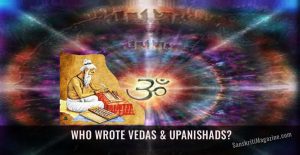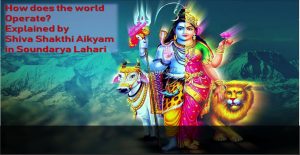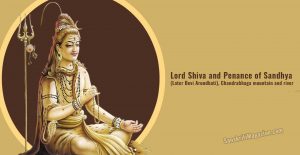
Who wrote the Vedas and Upanishads?
Vedas and Upanishads that form the key foundational scriptures of the Sanatana Dharma don’t have authors name mentioned anywhere. In the modern society, where the

Vedas and Upanishads that form the key foundational scriptures of the Sanatana Dharma don’t have authors name mentioned anywhere. In the modern society, where the

Lord Ardhanārishwarā, epitome of oneness of Lord Shiva and Parvati represents the source of the world Soundarya Lahari Sloka 1 Śivaḥ śaktyā yukto

by Pratha Sharma The marriage of Lord Shiva and Devi Sati is one of the most important events marked in the Shaiv and Shakt sects

By Maria Wirth Yes, and it is even natural. One only needs to deeply reflect on what is meant by the Almighty. If somebody grew

Shiva Purana (Rudra Samhita – Sati Khanda 5): Introduction: Sandhya was the daughter of Lord Brahma born from his mind. She was looked at with

Pushpadanta was a great devotee of Lord Siva. He was the chief of the Gandharvas. His teeth were like the petals of the jasmine flower.

Hanuman Jayanti, the auspicious celebration of the birth of Lord Hanuman, is more than a

Uncovering the Power and Symbolism Behind a Beloved Name When we chant “Jai Hanuman!” we

Tomorrow, across India and beyond, millions will celebrate Hanuman Jayanti, the divine birth anniversary of

Celebrate the final day of Chaitra Navratri 2025 by honoring Maa Siddhidatri, the bestower of divine powers and wisdom. Discover her sacred story, powerful symbolism, and simple ways to involve the whole family in her worship.

On Day 8 of Chaitra Navratri 2025, worship Maa Mahagauri, the goddess of purity and peace. Discover her gentle story, significance, and how families can honor her with meaningful rituals and joyful reflection.

Sanskriti comes from the Sanskrit root “kr” which means to do or to make prefix “sam” is applied before it to convey a sense of embellishment. It means actions done for the holistic refinement and perfection all the potentialities within a human being.
Copyright © 2024. Sanskriti Magazine
Copyright © 2024. All rights reserved.